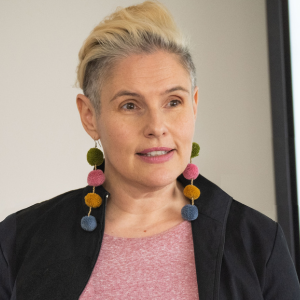Immigrant Students are Learning in Fear. State Lawmakers Can Help Change That.
Amézquita and Kleyn: Amid federal cuts and deportation threats, states need to step up to prepare teachers and help students.

Get stories like this delivered straight to your inbox. Sign up for The 74 Newsletter
For New York educators with immigrant students, the past few months have been full of fear and devastation. When a Bronx high school student was detained at an immigration check-in, waves of anxiety rose throughout our immigrant and educator communities. Who would be next?
Everyday teachers and school counselors are seeing students of all ages grapple with the stress and uncertainty caused by their migration or immigrant experience. How could we reassure them that they belong when the leaders of our country are saying otherwise?
Amid the federal climate of cruelty, billions in possible budget cuts for K-12 education, and threats of mass deportation, we can find some answers to these daily questions close to home. As educators from the City University of New York – Initiative on Immigration and Education (CUNY-IIE) we have created helpful guides and resources for aspiring and in-service educators in our state.
These ad-hoc solutions will certainly help when the school year resumes. But they are not enough. With the federal government poised to cancel funding for programs that include support for English learners, it will be up to the states to step in to provide programming and access for all their students.
Here in New York, we are calling on the state legislature in Albany to enact two bills in the upcoming session that will codify the support for our immigrant students and better prepare educators to meet this moment.
Currently, educator preparation programs in New York State do not require content on immigration policy and law and their intersection with education. Thus, many educators feel unprepared to teach and support immigrant-origin students effectively. This must change.
Last session, Democratic State Sen. Robert Jackson introduced Bill S881, with its counterpart bill, A8033, introduced by Democratic Assembly member Gabriella Romero. Both of these bills required colleges to include content on immigration policy and immigrant integration in all of their education programs. Educators would also be instructed on multilingual ways to educate students with immigrant origins.
The second bill, S1025 and A8034, introduced by the same lawmakers, required continuing education for teachers and administrators related to trauma-informed practices to support immigrant students. This legislation aimed to ensure that teachers are regularly updated on best practices to work with students who may be bringing trauma inflicted by immigration into the classroom.
Although these bills did not pass committee consideration in this recent legislative session, their passage in the upcoming session would ensure that our teachers, administrators, and school counselors are better equipped to serve immigrant students. If these measures are enacted, New York would become one of the first states to mandate immigration as a topic for educators, setting a standard for education programs nationwide.
In turn, this would signal to other states, particularly those with large immigrant populations, that it’s essential to enact similar measures to ensure educators are fully equipped to teach immigrant-origin students.
The teaching of immigration and the immigrant experience impacts us all, as the literacies of citizenship are part of the very core of our Constitution, and the mapping of our country’s history. Teaching about U.S. immigration and the immigrant experience is about sustaining and amplifying our democracy, and it is particularly imperative in spaces — in and outside of the classroom — where immigrant voices may not be at the center.
While we wait for New York state lawmakers to do what’s right – and necessary – CUNY-IIE will continue to offer resources to better prepare teachers in preK through 12th grade. A bilingual third-grade teacher in Washington Heights authored the CUNY-IIE professional development module titled “Supporting Immigrants in Schools: Trauma-Informed Practice.” The module can be used by schools across the state so that educators can learn to recognize and respond when immigrant students may have experienced trauma.
On the higher education level, CUNY-IIE has also produced a guide for professors who prepare teachers. In the fall, our team will release this multimodal immigration-focused resource that higher education faculty can consider for their coursework, regardless of their educational subfield.
Our program also brought together 10 education faculty members from across the CUNY and SUNY systems. They redesigned their course syllabi to ensure immigration is included, because almost all educators work with immigrant students. The faculty members also developed an immigrant-focused assignment. One instructor is planning to have students research the history of a new or longstanding immigrant group in their region.
This is, of course, all triage. We’re responding as best we can to the daily onslaught of deportations, immigration restrictions, and purposefully cruel measures of this second Trump administration. Because immigrants continue to be a central part of New York state communities, the education of children who were born here to immigrant parents or who recently settled here must be a priority.
We have already started this work because we see the urgent need. Now it’s time for lawmakers to create systemic changes for our education system to ensure that teachers are prepared and immigrant students are not an afterthought.
Get stories like these delivered straight to your inbox. Sign up for The 74 Newsletter

;)

